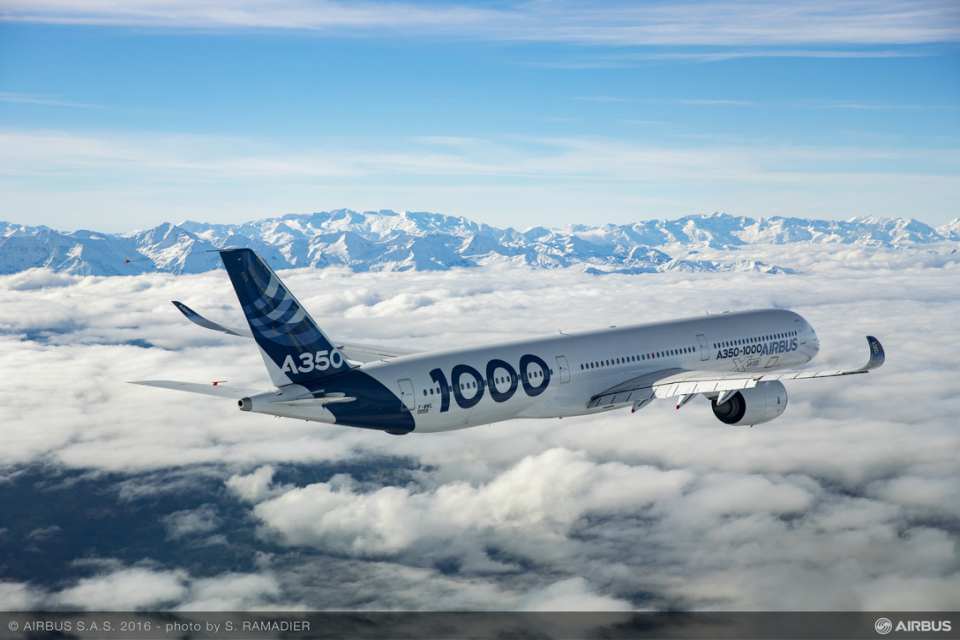Aviation
Airbus-developed A350 XWB safety feature enables automated emergency descents

Airbus-developed A350 XWB safety feature enables automated emergency descents..
The first Airbus A350-1000, which was delivered to launch operator Qatar Airways last month, is equipped with a new safety feature that will now be standard across all A350-1000s. Called the automated emergency descent, or AED, this system engages the aircraft’s autopilot function to automatically and quickly bring the aircraft to a lower, safer altitude in the event of in-flight cabin depressurization.
A pioneering Airbus application for safety
The AED’s use on the A350-1000 is the first application of its kind in a large commercial aircraft and demonstrates Airbus’ commitment to ensuring safety through what AED project leader Florent Lanterna termed “Airbus’ continuous improvement philosophy.”
Developing the brand-new system also meant evolving an innovative way for Airbus engineers to work across the company’s separate locations. The AED system requires a seamless interface between the aircraft’s autopilot and cabin pressurisation systems, explained Besse, and called for close collaboration between the engineers responsible for each system to integrate them. “The autopilot test bench is in Toulouse, France and the cabin pressurisation facility is in Hamburg, Germany,” said Besse. An inability to connect the two sites “would have meant having to do the AED system’s testing on a real aircraft, which would take much longer.”

Team : Airbus-developed A350 XWB safety feature enables automated emergency descents
Developing the brand-new system also meant evolving an innovative way for Airbus engineers to work across the company’s separate locations. The AED system requires a seamless interface between the aircraft’s autopilot and cabin pressurisation systems, explained Besse, and called for close collaboration between the engineers responsible for each system to integrate them.

Aviation
Boeing, Antonov to Collaborate on Defense Projects

– MOU represents Boeing’s commitment to work with Ukrainian industry
– Includes exploring opportunities for collaborating on in-country support of Unmanned Aerial Systems
A Memorandum of Understanding was signed today by Boeing and Antonov Company to investigate potential collaboration on defense-related projects.
“We’re happy to keep collaborating with the Antonov Company to help Ukraine’s economic development and expansion,” stated Ted Colbert, CEO and president of Boeing Defence, Space, & Security.
Airbus and the Antonov An-225: The Best Partnership:Click here
“This agreement demonstrates our ongoing efforts to find more opportunities to work with Ukrainian industry, which was underscored by our signing of the Ukrainian Defence Industry Compact earlier this year.”
The areas of potential collaboration identified in the agreement consist of training, logistical support and overhaul services for tactical Unmanned Aerial Systems utilized by the Ukrainian Armed Forces, which includes the ScanEagle. In addition, the companies will also explore opportunities for Antonov to provide engineering support to Boeing.
The six largest cargo aircraft ever built in the aviation industry:Click here
“A strong, innovative, and efficient defense industry is key to sustainable economic development and national security, and we are extremely excited to collaborate with Boeing,” said Ievhen Gavrylov, CEO of Antonov Company.
This agreement brings a whole new level of opportunity to implement the latest and most effective solutions – in addition to the possibility of future projects with Boeing in the aerospace and defense industry.”
-

 Travel1 week ago
Travel1 week agoAir India to Expand US Operations with Three New Routes After a Decade
-

 Travel2 weeks ago
Travel2 weeks agoWhy We Should Avoid These Stamps in a Passport
-

 Airlines1 month ago
Airlines1 month agoInvestigations Reveal Fake Chinese Titanium in Boeing and Airbus Jets
-

 Tech4 weeks ago
Tech4 weeks agoChina’s CATL Plans 1,800-Mile Electric Plane Launch by 2027
-

 Airport3 days ago
Airport3 days agoTop 10 Largest Airports in the World by Size
-

 Aerospace4 weeks ago
Aerospace4 weeks agoChina’s Fighter Jets Turn Wings into Autonomous Drones
-

 Airlines4 days ago
Airlines4 days agoAir India Rolls Out A350s for Delhi-New York JFK and Newark Routes
-

 Defence3 weeks ago
Defence3 weeks agoBoeing Enhances Chinook with New Engines and Block II Upgrades at $96 Million










